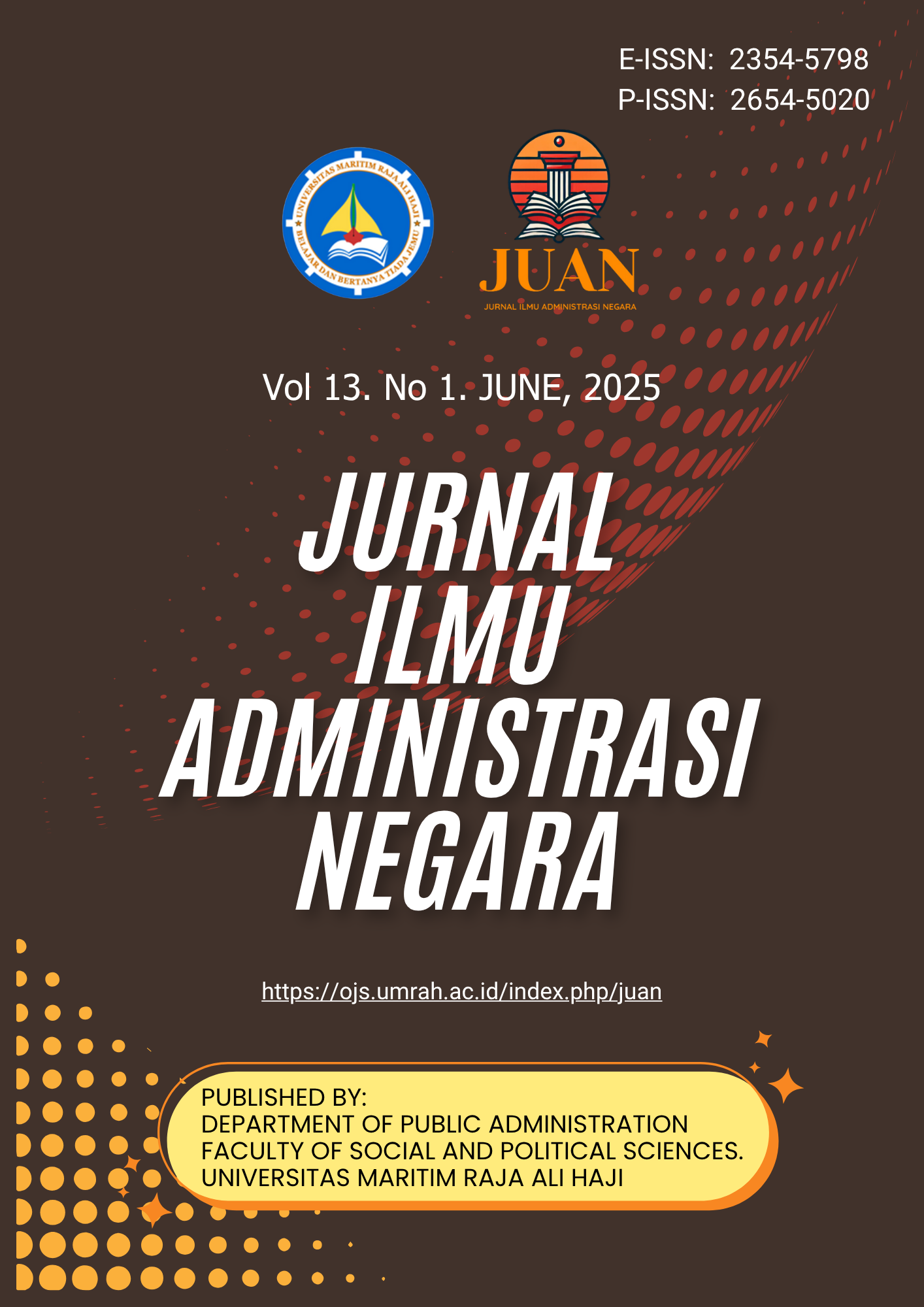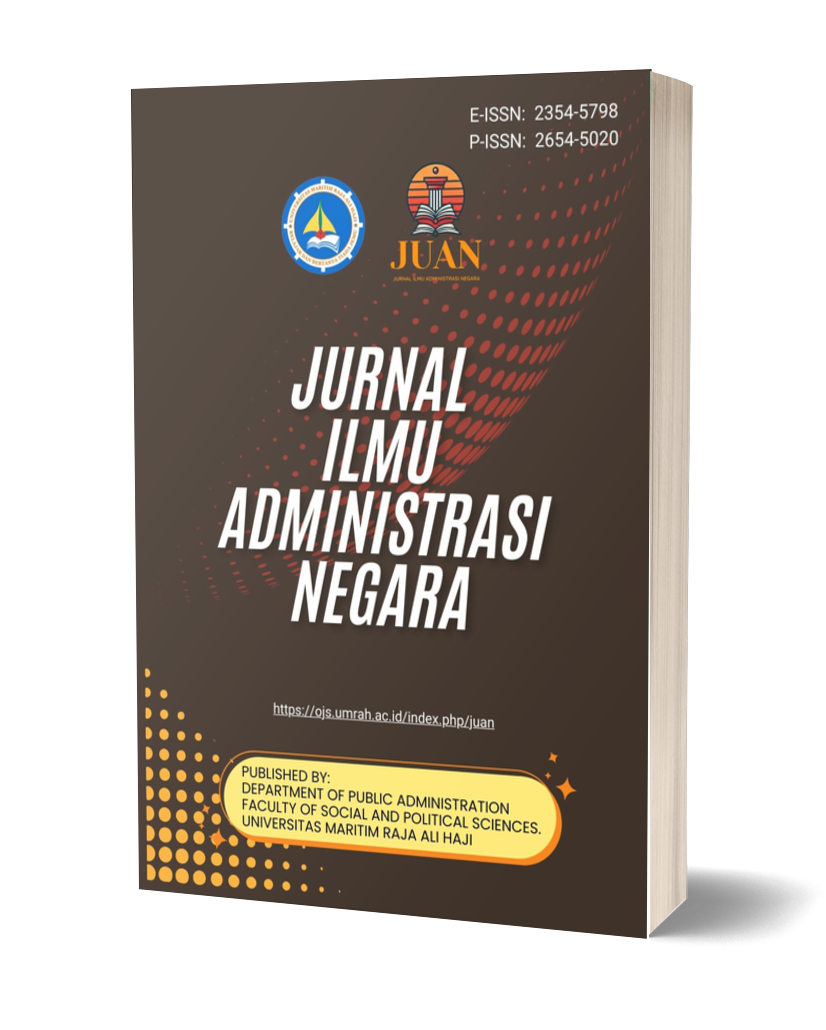Why Do People Adopt Mobile Passports? An Extension of Technology Acceptance Model
DOI:
https://doi.org/10.31629/juan.v13i1.7510Keywords:
Adoption, Technology Acceptance Model, PLS-SEM, M-PassportAbstract
The increasing demand for efficient public services in the immigration sector has driven the Directorate General of Immigration of Indonesia to innovate through the Mobile Passport (M-Passport) application. This digital platform enables the public to apply for new passports and renew expired ones online, aligning with national e-government policies to enhance service quality and operational efficiency. This study aims to examine factors influencing the adoption of M-Passport using an extended Technology Acceptance Model (TAM) by incorporating the variable of individual attractiveness. Specifically, it investigates the effects of individual attractiveness, perceived usefulness, and perceived ease of use on attitude, as well as their indirect influence on behavioral intention. A quantitative approach was applied, utilizing Partial Least Squares Structural Equation Modeling (PLS-SEM) on data from 400 respondents who accessed M-Passport services at the Class I TPI Immigration Office in Padang. Non-probability convenience sampling was employed, and data were analyzed for validity, reliability, and hypothesis testing. Results reveal that three of six hypotheses were supported: individual attractiveness positively and significantly affects perceived usefulness; perceived ease of use positively and significantly affects perceived usefulness; and attitude positively and significantly affects behavioral intention. Conversely, individual attractiveness, perceived usefulness, and perceived ease of use showed no significant direct effects on attitude. The findings underscore the importance of enhancing the application’s visual appeal and ease of use to improve perceived usefulness and ultimately drive adoption. This research contributes both theoretically, by extending TAM in the context of public service innovation, and practically, by offering recommendations to immigration authorities for improving M-Passport uptake.
Downloads
References
Ajzen, I. (1991). The theory of planned behavior. Organizational Behavior and Human Decision Processes, 50(2), 179–211. https://doi.org/10.1016/0749-5978(91)90020-T
Ali, B. M., Wafer, S. saleh, & Ramlogan, R. (2019). Aspectual Analysis Of E-Government Adoption Barriers: A Citizens Perspective. http://www.bam.ac.uk/
Bissessar, D., Adams, C., & Stoianov, A. (2016). Privacy, Security and Convenience: Biometric Encryption for Smartphone-Based Electronic Travel Documents. Studies in Computational Intelligence, 621, 339–366. https://doi.org/10.1007/978-3-319-26450-9_13
Davis, F. D. (1989). Perceived usefulness, perceived ease of use, and user acceptance of information technology. MIS Quarterly: Management Information Systems, 13(3), 319–339. https://doi.org/10.2307/249008
Davis, F. D. (1993). User acceptance of information technology: system characteristics, user perceptions and behavioral impacts. International Journal of Man-Machine Studies, 38(3), 475–487. https://doi.org/10.1006/IMMS.1993.1022
Fornell, C., & Larcker, D. F. (1981). Evaluating Structural Equation Models with Unobservable Variables and Measurement Error. Journal of Marketing Research, 18(1), 39–50. https://doi.org/10.1177/002224378101800104
Garcia II, J. M. S., Himang, M. M., Himang, C. M., Densing, G. R. R., Alit, M. J. B., Burgos, N. P., Bongo, M. F., & Ocampo, L. A. (2023). An Extended Technology Adoption Model with Perceived Visual Attractiveness to Assess Academic Web Portals. Trends in Higher Education 2023, Vol. 2, Pages 152-167, 2(1), 152–167. https://doi.org/10.3390/HIGHEREDU2010010
Hair, F. J. (2017). A Primer on Partial Least Squares Structural Equation Modeling (PLS-SEM) - Joseph F. Hair
Hair, J. (2009). Multivariate Data Analysis. Faculty Articles. https://digitalcommons.kennesaw.edu/facpubs/2925
Henseler, J., Ringle, C. M., & Sarstedt, M. (2015). A new criterion for assessing discriminant validity in variance-based structural equation modeling. Journal of the Academy of Marketing Science, 43(1), 115–135. https://doi.org/10.1007/S11747-014-0403-8/FIGURES/8
Hung, S. Y., Chang, C. M., & Yu, T. J. (2006). Determinants of user acceptance of the e-Government services: The case of online tax filing and payment system. Government Information Quarterly, 23(1), 97–122. https://doi.org/10.1016/J.GIQ.2005.11.005
Jalil Shah, H., & Attiq, S. (2018). Impact of Technology Quality, Perceived Ease of Use and Perceived Usefulness in the Formation of Consumer’s Satisfaction in the Context of E-learning. Abasyn Journal of Social Sciences, 1, 9.
Kanchanatanee, K., Suwanno, N., & Jarernvongrayab, A. (2014). Factors Affecting the Intention to use E-marketing of Small and Medium Sized Businesses in the Three Southern Border Provinces of Thailand. International Journal of Business and Social Science, 5(6). www.ijbssnet.com
Kim, K. J., Shin, D. H., & Park, E. (2015). Can Coolness Predict Technology Adoption? Effects of Perceived Coolness on User Acceptance of Smartphones with Curved Screens. Cyberpsychology, Behavior, and Social Networking, 18(9), 528–533.
Obaid, T., Eneizan, B., Naser, S. S. A., Alsheikh, G., Ali, A. A. A., Abualrejal, H. M. E., & Gazem, N. A. (2022). Factors Contributing to an Effective E- Government Adoption in Palestine. Lecture Notes on Data Engineering and Communications Technologies, 127, 663–676. https://doi.org/10.1007/978-3-030-98741-1_55
Sarstedt, M., Ringle, C. M., & Hair, J. F. (2021). Partial Least Squares Structural Equation Modeling. Handbook of Market Research, 1–40. https://doi.org/10.1007/978-3-319-05542-8_15-1
Shanmugam, A., Thaz Savarimuthu, M., & Chai Wen, T. (2014). Factors Affecting Malaysian Behavioral Intention to Use Mobile Banking With Mediating Effects of Attitude. Academic Research International, 5(2). www.journals.savap.org.pk
Sondakh, J. J. (2017). Behavioral Intention to Use E-Tax Service System: An Application of Technology Acceptance Model. European Research Studies Journal, XX(2A), 48–64. https://ideas.repec.org/a/ers/journl/vxxy2017i2ap48-64.html
Stefano, D., Ruggieri, G. ;, Bonfanti, S. ;, Faraci, R. C. ;, Stefano, G. Di, Ruggieri, S., Bonfanti, R. C., & Faraci, P. (2023). Entrepreneurship on Social Networking Sites: The Roles of Attitude and Perceived Usefulness. Behavioral Sciences 2023, Vol. 13, Page 323, 13(4), 323. https://doi.org/10.3390/BS13040323
Van der Heijden, H. (2003). Factors influencing the usage of websites: the case of a generic portal in The Netherlands. Information & Management, 40(6), 541–549. https://doi.org/10.1016/S0378-7206(02)00079-4
Downloads
Published
Issue
Section
License
Copyright (c) 2025 Yoserizal Yoserizal, Krismena Tovalini, Yulia Hanoselina

This work is licensed under a Creative Commons Attribution-ShareAlike 4.0 International License.
You are free to:
- Share — copy and redistribute the material in any medium or format for any purpose, even commercially.
- Adapt — remix, transform, and build upon the material for any purpose, even commercially.
- The licensor cannot revoke these freedoms as long as you follow the license terms.
Under the following terms:
- Attribution — You must give appropriate credit, provide a link to the license, and indicate if changes were made . You may do so in any reasonable manner, but not in any way that suggests the licensor endorses you or your use.
- ShareAlike — If you remix, transform, or build upon the material, you must distribute your contributions under the same license as the original.
- No additional restrictions — You may not apply legal terms or technological measures that legally restrict others from doing anything the license permits.













